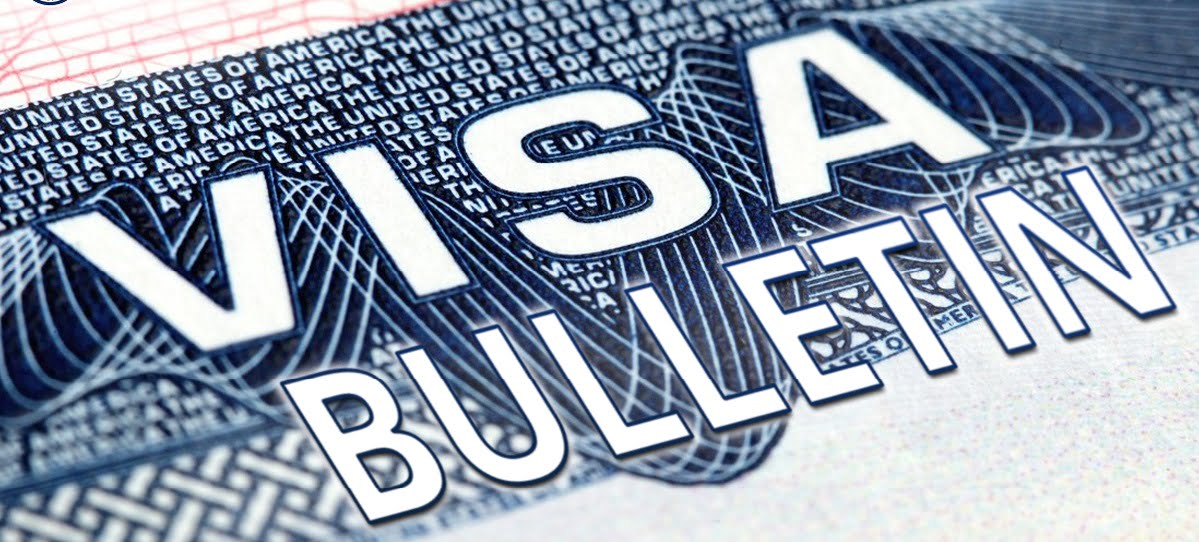Introduction to Startup and Entrepreneur U.S. Visas
Starting a business in the United States as an international entrepreneur involves navigating a complex immigration landscape. Selecting the right work visa is crucial for your startup’s success. This article will compare the E-2, L-1, and O-1 visas to give you a better understanding of the potential options.
The U.S. offers several visa options for international entrepreneurs and startup founders. The E-2, L-1, and O-1 visas are among the most popular for those looking to start or expand their business in the U.S. Each has unique requirements, benefits, and limitations. Understanding these differences is essential to determine which visa aligns best with your business goals and personal circumstances to live and work in the U.S.
While this article provides valuable insights, remember that it does not constitute legal advice. For personalized assistance with your immigration situation, please consult an immigration attorney. If you would like to speak with our lawyer, our customer care representative will be happy to arrange a call for you.
Understanding the E-2 Visa
The E-2 nonimmigrant visa is designed for investors from countries with which the United States maintains a treaty of commerce and navigation. This visa allows entrepreneurs to live and work for their businesses in the U.S. temporarily. To qualify for this visa, investors must make a substantial investment in a bona fide business enterprise that is real and operating.
- First and foremost, to be eligible for the E-2 visa program, you must be a citizen of a treaty country.
For a list of the countries with which the United States maintains a treaty of commerce and navigation, please see the U.S. Department of State’s Treaty Countries. If your country does not currently have such a treaty with the U.S., you are not eligible for the E-2 visa.
- Secondly, the investor must be coming to the U.S. to actively develop and direct their business. This means that an investor must have at least 50% ownership of the business, and be employed in a position where they will exercise its operational control, such as an executive or managerial level position. Investors cannot have a passive role in the business, and they cannot fulfill low-level duties that are typically reserved for employees.
- Third, the investment must be substantial and sufficient to ensure the successful operation of the business enterprise. While there is no set minimum investment amount, the nature of the business will dictate the amount of funds that must ultimately be invested.
Once the investment funds have been transferred to the business enterprise, the funds must be irrevocably committed to the business, meaning that expenses must be expended to ensure the business is real and operating. For example, this typically involves renting office space, making purchases for the business’ assets and equipment, inventory, payroll expenses, liability insurance, etc.
Additionally, the business must provide job opportunities for U.S. workers. Once the business is established, the investor must prepare to hire workers and pay them at least the local minimum wage where the business is situated. The business cannot be established solely for the purpose of earning a living. Instead, it must provide benefits to the U.S. economy including the employment of workers.
One of the key advantages is that the spouse of an E-2 visa holder can apply for work authorization. Furthermore, unlike other investment visas, the E-2 does not specify a minimum investment amount, although it must be substantial in relation to the total cost of the business.
The main drawback of the E-2 visa is that it is limited to citizens of treaty countries and does not provide a direct path to permanent residency. This limitation can be a significant disadvantage for those looking to establish a long-term presence in the United States. Another important drawback is that visa holders are only authorized to work for the business indicated on their E-2 petition. If the nature of the business materially changes, the investor must re-apply and seek a new investor visa for the new business.
Unfortunately, premium processing is not available for E-2 visa applications. E-2 visa petitions must go through the regular processing channels, which can vary significantly in processing times depending on the US embassy in a particular country and individual case circumstances.
Additionally, citizens of non-treaty countries cannot take advantage of this program, and will need to explore other visa options.

Requirements and Benefits of the L-1 Visa
The L-1 nonimmigrant visa is ideal for multinational companies transferring executives, managers, or employees with specialized knowledge to work for their U.S. offices.
To qualify for an L-1 visa, the U.S. employer must have a qualifying relationship with a foreign company, such as a parent company, subsidiary, affiliate, or branch.
The employee must have worked for the foreign company for at least one continuous year within the past three years, and be coming to the U.S. to serve in an executive, or managerial capacity, or to fill a role requiring specialized knowledge from an affiliated foreign office to one of the company’s offices in the United States.
The L-1A classification allows a foreign company that does not yet have an affiliated U.S. office, to send an employee (like CEO) to the U.S. for the purpose of creating one.
One of the key benefits of the L-1 visa is its dual intent nature, allowing the visa holder to apply for a green card at a later time, without jeopardizing their nonimmigrant visa status. Additionally, spouses of L-1 visa holders can apply for work authorization. Another advantage is that there is no need for a substantial investment, making it suitable for U.S. employers to petition their executives, managers, or professionals with specialized knowledge to work for their U.S. offices.
Premium processing is available for L-1 visa petitions, including L-1A (managers and executives) and L-1B (employees with specialized knowledge).
However, the L-1 visa requires complex documentation to prove the qualifying relationship and the nature of the position. The L-1 visa is initially granted for one to three years, with a maximum duration of seven years for executives and managers, and five years for specialized knowledge workers. This limitation can pose challenges for those seeking long-term stays in the United States.
The Unique Advantages of the O-1A Visa
The O-1A nonimmigrant visa is for individuals with extraordinary ability in the sciences, education, business, or athletics. This visa is less common for a startup wishing to expand but can be advantageous for founders and employees with significant accomplishments.
To qualify for an O-1A visa, the applicant must demonstrate extraordinary ability through sustained national or international acclaim, and be coming to the United States to work temporarily in an area of extraordinary ability.
One of the key considerations of the O-1A visa is that applicants cannot self-petition for their visas. Instead, they must have a job offer from a U.S. employer, who will then petition for the employee to work in the proffered position. For entrepreneurs, this means that your U.S. company must petition for your employment, and a valid employer-employee relationship must exist. For instance the company must have the authority to hire, fire, and supervise your work.
One of the unique benefits of the O-1A visa is that it is open to all nationalities, unlike the E-2 visa which is limited to citizens of treaty countries. The O-1 visa is initially granted for up to three years, with extensions of stay available. It also offers flexibility, allowing holders to work for multiple employers, provided each employer petitions for and receives approval for the O-1 worker.
Additionally, premium processing is an option for L-1 visa petitions, offering a notable benefit for applicants requiring a quicker decision. The premium processing fee, currently set at $2,805, must be paid at the time of filing. Once the premium processing request is received, USCIS commits to providing a response within 15 calendar days.
However, the O-1A visa requires a high standard of proof, requiring extensive evidence of extraordinary ability. Its criteria can be challenging to meet and it can take quite some time to gather the necessary documentation. Like the E-2 visa, the O-1A does not offer a direct route to permanent residency, though holders can transition through other visa categories, like EB-1A or EB-2 NIW.
To learn more about the O-1A visa requirements, please click here.
Key Differences Between E-2, L-1, and O-1A Visas
The E-2, L-1, and O-1A visas have distinct eligibility criteria, benefits, and limitations.
The E-2 visa is geared towards investors from treaty countries, requiring a substantial investment in a U.S. business, and the hiring of U.S. workers.
In contrast, the L-1 visa is suitable for employees of multinational companies seeking to transfer to a U.S. branch, requiring proof of a qualifying relationship and specific employment history for visa approval.
The O-1A visa is designed for individuals with extraordinary ability, necessitating extensive evidence of national or international acclaim. The U.S. company must petition for the O-1 worker.
In terms of flexibility, the E-2 visa is ideal for investors looking to start and manage a new business in the U.S., while the L-1 visa is better suited for employees & executives of multinational companies. The O-1A visa is best for individuals with exceptional talents looking to work in their field of expertise.
Regarding the path to permanent residency, the E-2 visa does not provide a direct path but investors can transition to other visa types that make this possible. The L-1 visa’s dual intent nature allows for an easier transition to a green card, while O-1A visa holders can apply for a green card through the EB-1A category for individuals of extraordinary ability.
Choosing the Right Visa for Startup Founders
Selecting the right visa depends on your specific circumstances, including your country of nationality, the nature of your business, and your professional background. It is crucial to evaluate the requirements and benefits of each visa type to determine the best fit for your startup.
If you have substantial capital to invest and are from a treaty country, the E-2 visa may be right for you. On the other hand, if you are part of a multinational company and need to transfer to a U.S. office, the L-1 visa is likely the most suitable option. If you have significant accomplishments and recognition in your field, the O-1A visa could be the right choice.
Consulting with an immigration attorney can provide personalized guidance based on your unique situation, helping you navigate the complexities of the visa application process.
Tips for E-2, L-1, and O-1 Visa Applications
Meeting the investment requirements for an E-2 visa can be challenging. To overcome this, it is essential to ensure thorough documentation of the investment (complete tracing of the origin of the funds) and a detailed business plan.
Proving the qualifying relationship and employment history for an L-1 visa can also be complex. To address this, maintaining detailed records of the corporate relationship and employment history is crucial. Gathering organizational charts, business plans, and employment records can support the application effectively.
Finally, demonstrating extraordinary ability for an O-1 visa requires extensive evidence, which can be challenging to compile. To ensure a successful case, it is beneficial to understand the O-1A criteria, which includes evidence of awards, publications, endorsements from industry experts, etc.. Seeking membership in distinguished professional associations may also be advantageous.
How to Apply for Each Visa Type?
Applying for an E-2 visa involves several steps. First and foremost, applicants must work with a qualified corporate attorney to assist them with the corporate formation of their business in the state in which they wish to operate, and immigration to support the strategy for the E-2 visa. Applicants will need detailed guidance regarding how to meet the investment requirements for their business, and the supporting documentation they must gather to demonstrate that their business is real and operating.
Once applicants have gathered the necessary documentation, if they are residing overseas they will need to apply for their visa at their local U.S. Consulate or Embassy. For this process, you will need to complete the online nonimmigrant visa application, Form DS-160. After paying the visa fee, you must schedule and attend the visa interview, bringing all required documentation, including proof of investment and business plans.
Those who are lawfully present in the U.S. on another visa type such as B-1, who wish to change their status to E-2 investor, may choose to apply with USCIS. This requires completing Form I-129 Petition for a Nonimmigrant Worker with E supplement, paying the application fees, and submitting all required documentation to USCIS.
For an L-1 visa, applicants will need to file Form I-129 with L supplement with USCIS. This includes providing supporting documents such as evidence of the qualifying relationship, employment history, and job position. Once you have received USCIS approval, if you reside overseas, you will also need to complete the online nonimmigrant visa application, Form DS-160. After paying the visa fee, you must schedule and attend the visa interview, bringing all required documentation with you.
Finally, the application process for an O-1A visa begins with the U.S. employer filing Form I-129 with the O supplement, with USCIS. You must submit extensive evidence of extraordinary ability, such as awards, publications, and expert endorsements. Similarly, once you have received USCIS approval, if you reside overseas, you will need to complete the online nonimmigrant visa application, Form DS-160. After paying the visa fee, you must schedule and attend the visa interview, bringing all required documentation with you.
Conclusion: Making the Best Decision for Your Business
Choosing the right visa is a pivotal step in launching your startup in the U.S. By understanding the distinct advantages and requirements of the E-2, L-1, and O-1A visas, you can make an informed decision that aligns with your business goals and personal circumstances. Consulting with an immigration attorney can provide personalized guidance, helping you navigate the complexities and increase your chances of success. Furthermore, choosing the right visa will set the foundation for your startup’s success and growth in the United States.
If you want to talk about your case and ability please schedule a call with our customer care team to learn more about how our attorneys can help you.
FAQ
Can my family join me on these visas?
Yes, dependents can accompany you to the United States for all of these visa types. Spouses of E-2 and L-1 visa holders are also eligible for work authorization. However, spouses of O-1 visa holders are not eligible for work authorization and employment in the U.S..Can these visas be extended?
In general, yes, all three visas have provisions for extensions under specific conditions.What if my business fails while on an E-2 visa?
If your business ceases to exist or the nature of your business materially changes while you are on an E-2 visa, it may be necessary for you to depart the U.S. and/or seek legal advice to explore eligibility for other visa types.Can I change employers on an O-1 visa?
Changing employers on an O-1 visa is possible, but it requires each new employer to file a petition with USCIS on your behalf and obtain approval before you can begin working for them. It is recommended to discuss with the immigration attorney what is the best recommendation for your particular situation.









